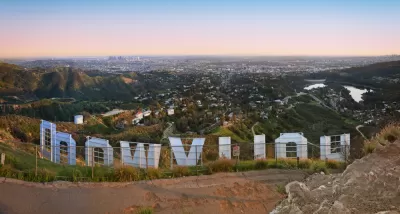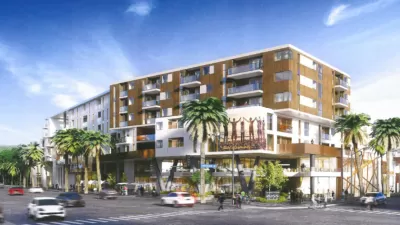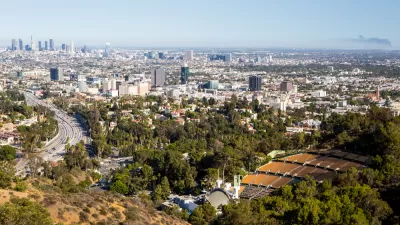Closing today: one of the most popular hiking trails in the Hollywood Hills, another case of the antipathy between public access and private property.

KPCC AirTalk picked up on a long-developing story from Los Angeles, where Hollywood homeowners won a victory by shutting down a popular hiking path up to the Hollywood Sign.
Previously, the most-traversed path to the Hollywood Sign was up a road in Beachwood — much to the chagrin of many of the neighborhood’s residents. But after years of strife between residents, tourists, and City Hall, the Beachwood path will be closed this month. That decision comes as the result of a court battle between the city and a commercial stable that was leasing land at the Beachwood trailhead.
The audio of the radio show aired on April 17, 2017, offers a chance for some of the local residents who oppose the use of the trail. Sarajane Schwartz says, for instance, that the access to the trail on her street was unsafe, and that hikers will still be able to access the same trails. Linda Othenin-Girard says that hikers and traffic will simply be moved to other streets and neighborhoods, and opposes the closure as an bad precedent for public access to public spaces. Sarah Dusseault, chief of staff for Councilman David Ryu, who represents the area, also talks about the councilmember's efforts to maintain access to the Hollywood Sign area.
For a traditional news report on the court case and the ensuing closure, Emily Alpert Reyes reported in March on the lawsuit and controversy.
FULL STORY: Major hiking path to the Hollywood Sign set to close

Alabama: Trump Terminates Settlements for Black Communities Harmed By Raw Sewage
Trump deemed the landmark civil rights agreement “illegal DEI and environmental justice policy.”

Planetizen Federal Action Tracker
A weekly monitor of how Trump’s orders and actions are impacting planners and planning in America.

The 120 Year Old Tiny Home Villages That Sheltered San Francisco’s Earthquake Refugees
More than a century ago, San Francisco mobilized to house thousands of residents displaced by the 1906 earthquake. Could their strategy offer a model for the present?

Indy Neighborhood Group Builds Temporary Multi-Use Path
Community members, aided in part by funding from the city, repurposed a vehicle lane to create a protected bike and pedestrian path for the summer season.

Congestion Pricing Drops Holland Tunnel Delays by 65 Percent
New York City’s contentious tolling program has yielded improved traffic and roughly $100 million in revenue for the MTA.

In Both Crashes and Crime, Public Transportation is Far Safer than Driving
Contrary to popular assumptions, public transportation has far lower crash and crime rates than automobile travel. For safer communities, improve and encourage transit travel.
Urban Design for Planners 1: Software Tools
This six-course series explores essential urban design concepts using open source software and equips planners with the tools they need to participate fully in the urban design process.
Planning for Universal Design
Learn the tools for implementing Universal Design in planning regulations.
Clanton & Associates, Inc.
Jessamine County Fiscal Court
Institute for Housing and Urban Development Studies (IHS)
City of Grandview
Harvard GSD Executive Education
Toledo-Lucas County Plan Commissions
Salt Lake City
NYU Wagner Graduate School of Public Service





























